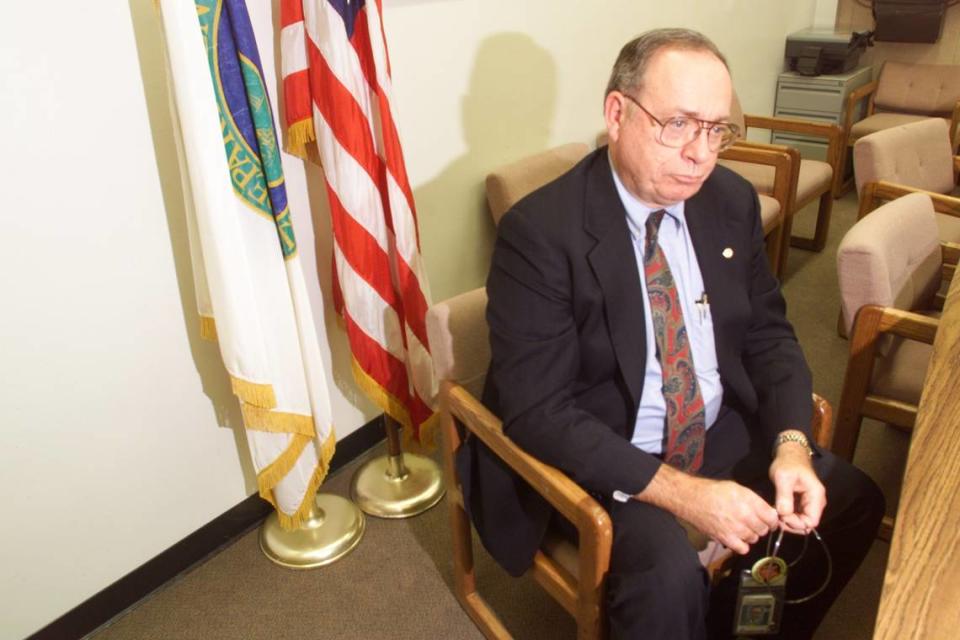Former top official with ‘most important, difficult job’ at Hanford nuclear site dies
The Hanford site Department of Energy manager who led much of the transition from weapons plutonium production to environmental cleanup has died.
John D. Wagoner died June 6 in Knoxville, Tenn., at the age of 83.
He was named the interim Hanford manager, responsible not only for oversight of Hanford cleanup but also the Department of Energy’s Pacific Northwest National Laboratory in Richland, in 1990 about a year after the signing of the Tri-Party Agreement marked the start of Hanford environmental cleanup.
Wagoner was named the Hanford manager in 1991, after 17 months as interim manager, and retired in early 1999.
“This has been the toughest, most rewarding challenge of my career,” he said when his retirement was announced. “I’m proud of the work we’ve done ... and the new programs we’ve launched to attack the problems efficiently and effectively.”
The now 560-square-mile Hanford nuclear reservation adjacent to Richland in Eastern Washington was used to produce nearly two-thirds of the plutonium production for the nation’s nuclear weapons program from World War II through the Cold War, leaving radioactive and hazardous waste and extensive contamination.
“I’ve been impressed by John’s mastery of the issues, and his professionalism in what I consider to be one of the most important and difficult jobs in the DOE complex,” said former U.S. Energy Secretary Bill Richardson in late 1998.
Former Oregon Gov. John Kitzhaber praised Wagoner at his retirement for inviting and encouraging those most at risk from Hanford to have a direct say in decisions and activities at the site as Wagoner led “the difficult transition from production to cleanup.”

At the first meeting of the Hanford Advisory Board in 1994 he pledged that the board would be independent of DOE and that DOE “cannot and will not control this board,” according to a copy of his prepared remarks.
The early years of Hanford cleanup were “marked by frustration, false starts, a lack of enthusiasm over the cleanup mission, and environmental laws which required extensive study and planning before cleanup could occur,” said the Oregon Department of Energy in its 10 Year Report on Hanford.
But after a slow start “cleanup is well underway and there are many successes,” it said in 1999 not long after Wagoner left Hanford.
Wagoner said when he announced his retirement from DOE at Hanford that his tenure’s biggest accomplishments included getting programs under way to deal with millions of gallons of radioactive waste in underground tanks and getting environmental restoration of the site started.
In 2020, after several false starts, a contract was awarded that started construction of the Hanford vitrification plant to treat much of the site’s 56 million gallons of tank waste.
During Wagoner’s tenure, the last of 33 liquid waste discharges into the ground had all been stopped, treated or re-routed from hazard waste disposal sites and PUREX, N Reactor and B Plant were deactivated.
He also cited improvements in relations with the public, including creation of the Hanford Advisory Board with membership representing a broad range of backgrounds, concerns and ideas.
“I think they’ve done a lot of good. We’ve changed plans to reflect the input they have had,” he said.
Wagoner is survived by his wife Marilyn Wagoner, sons James and Jeremy Wagoner and daughter Julie Wagoner. A funeral mass was held June 10 and a graveside service is planned Monday.


